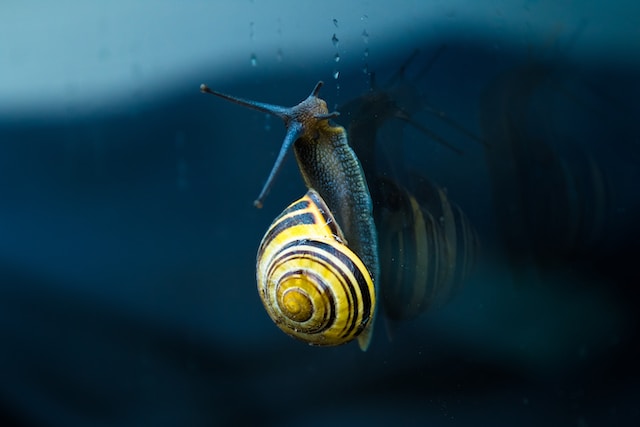Introduction: When we think of snails, their slow and deliberate movement often comes to mind. Yet, beneath their seemingly simple exterior lies a marvel of biological engineering—the snail’s foot. This unassuming organ plays a crucial role in their unique walking abilities. In this article, we delve into the fascinating world of the snail foot, exploring
Introduction:
When we think of snails, their slow and deliberate movement often comes to mind. Yet, beneath their seemingly simple exterior lies a marvel of biological engineering—the snail’s foot. This unassuming organ plays a crucial role in their unique walking abilities. In this article, we delve into the fascinating world of the snail foot, exploring its dual functions of adhesion and locomotion.
- Adhesive Secretions: Sticking to Surfaces One of the remarkable features of a snail’s foot is its ability to adhere to surfaces, allowing snails to traverse various terrains without slipping. The foot contains specialized glands that produce a sticky mucus, which acts as an adhesive substance. When a snail moves, it releases a trail of mucus behind, providing traction and preventing it from sliding backward. This adhesive quality enables snails to crawl vertically on smooth surfaces and even traverse upside-down on ceilings.
- Muscular Contraction: Propelling Forward Motion While adhesion provides stability, the snail’s foot also serves as the engine for its locomotion. The foot is equipped with powerful muscles that contract and relax in a rhythmic pattern, generating the necessary force to move the snail forward. These muscular contractions create a wave-like motion, propelling the snail along the ground or other surfaces. Through this coordinated movement, snails can slowly and steadily navigate their environments.
- Fine-Tuning Movement: Sensory and Nervous Systems The snail foot is not just a passive adhesive and propulsive apparatus; it is also intricately connected to the snail’s sensory and nervous systems. Thousands of nerve cells extend throughout the foot, providing a wealth of information about the environment. This sensory feedback allows snails to make nuanced adjustments to their movement, adapting to changes in terrain, obstacles, and potential threats.
- Evolutionary Adaptations: Diversity in Foot Structure The structure of the snail foot can vary across different species, reflecting adaptations to their specific habitats and lifestyles. Some snails have evolved specialized structures within their foot, such as pedal glands, which produce mucus with varying viscosities for specific purposes. For example, certain aquatic snails may have more elaborate foot structures with expanded surfaces to enhance buoyancy and swimming capabilities.
Conclusion:
The snail foot, with its dual role of adhesion and locomotion, is a remarkable example of nature’s ingenuity. This seemingly simple organ enables snails to move with precision and stability across diverse surfaces, defying gravity and adapting to various environments. Through the production of adhesive secretions and the rhythmic coordination of powerful muscles, snails demonstrate a mastery of movement that has evolved over millions of years.
Understanding the intricacies of the snail foot not only deepens our appreciation for these fascinating creatures but also offers insights into the remarkable capabilities of organisms in the natural world. As we encounter snails during our explorations or even in our own gardens, let us marvel at the complexity of their locomotion and the vital role played by their extraordinary foot.

















Leave a Comment
Your email address will not be published. Required fields are marked with *